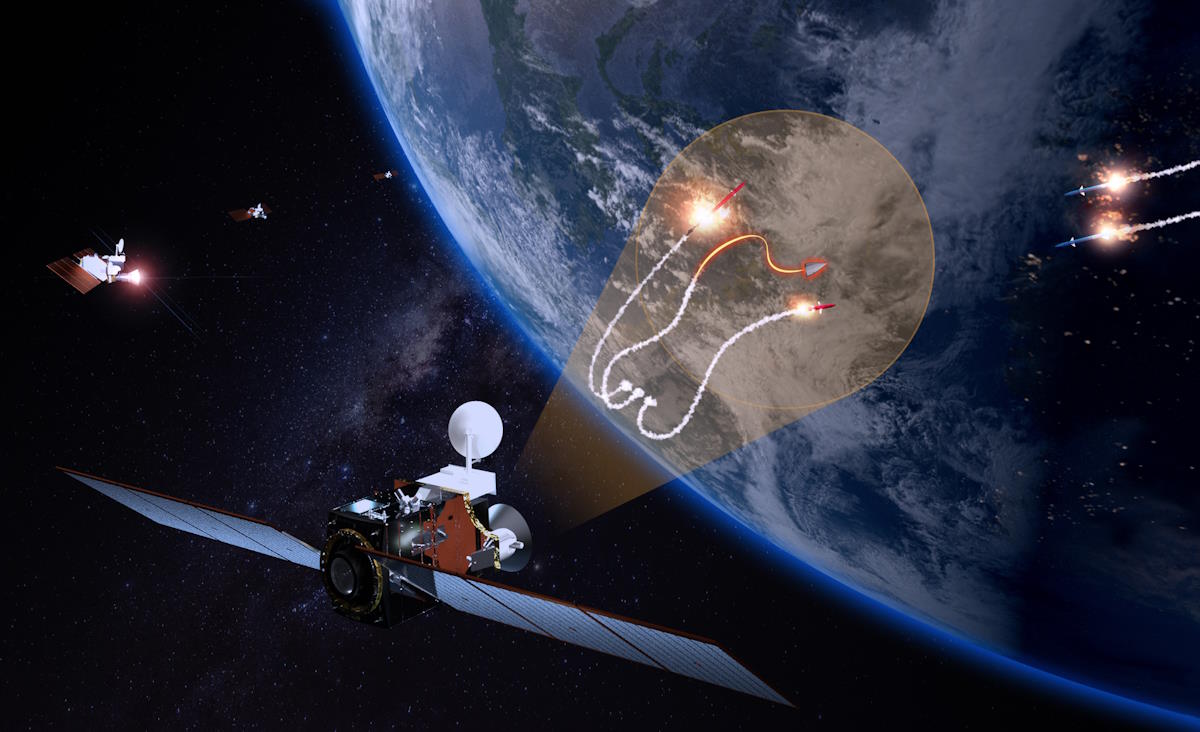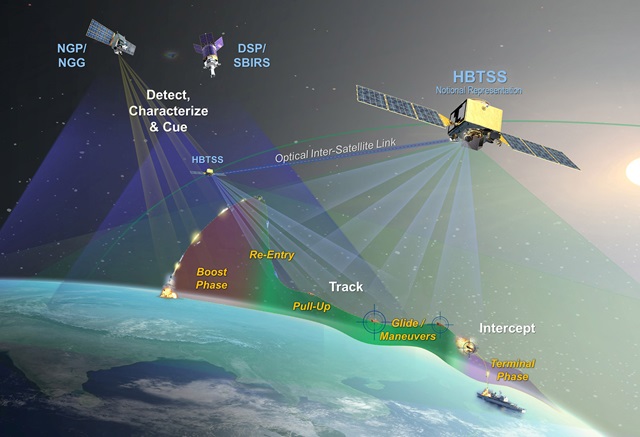Shield on Orbit: New U.S. Hypersonic Missile Tracking Satellite Was Successfully Tested
17th Jun 2024
The MDA agency has successfully conducted the first test of a hypersonic and ballistic space-tracking satellite system. Initial reports confirm the sensors successfully detected the launch of a mock target.
Without revealing too many details
A week after the preliminary announcement, the US Missile Defence Agency (MDA) tested the latest hypersonic missile satellite detection system. The Space Development Agency’s (SDA) Hypersonic and Ballistic Tracking Space Sensor satellites successfully collected data after the launch. The experts will analyse the received data in the coming weeks.
The MDA and SDA develop satellites under different programs, but they will be combined to work in the future. In particular, the HBTSS satellites will carry a medium-field-of-view sensor that will allow them to track even weak targets and transmit data to intercept systems.
The flight tracked by the satellites was the first for the MDA Hypersonic Testbed or HTB-1. The vehicle serves as a platform for various hypersonic experiments and advanced components.
The plan is to build a network of one hundred satellites for global coverage to monitor rocket launches. Some satellites will be in low orbit at a distance of about 1,000 kilometers from Earth, while others will be in medium orbit at an altitude of about 10,000 to 20,000 kilometers. The vehicles will have a lifetime of about five years, and the first 28 satellites will likely be replaced by a second group of 54 satellites.
What is HBTSS?
The Hypersonic Ballistic Space Tracking Sensor (HBTSS) is a satellite system being developed by the Missile Defence Agency (MDA). It works with the Glide Phase Interceptor (GPI) to counter hypersonic threats by providing accurate data to the interceptors.
HBTSS can track threats from launch to intercept. It will be part of a wider satellite network being developed by the Space Development Agency (SDA). This network called the Proliferated Warfighter Space Architecture (PWSA), consists of seven layers including tracking, transport, storage, battle management, navigation, deterrence, and support.

HBTSS will be part of the tracking tier, which is responsible for global warning and tracking of advanced missile threats such as hypersonic systems. Wide Field of View (WFoV) satellites will relay data to HBTSS Medium Field of View (MFoV) satellites for precision guidance of interceptors.
Background
The development of 28 satellites for HBTSS, which will be launched into low and medium orbit by 2025, is being led by US military-industrial companies L3Harris Technologies and Northrop Grumman, which received $122m and $155m respectively from the Pentagon for this purpose in 2021.
Under the two contracts, the companies will produce 14 satellites each, worth about $700 million and $617 million, respectively. Including the launch of the satellites, as well as ground control and support, about $2.5 billion will be spent on the program.
The main task of these satellites is to track hypersonic missiles developed by countries such as China and Russia, as well as to monitor potential missile threats from Iran and North Korea, which are also actively working on their hypersonic arsenal.
Hypersonic weapons are defined as anything traveling at speeds greater than Mach 5, or five times faster than the speed of sound. This is about 3,800 miles per hour (6,100 km/h). Intercontinental ballistic missiles are well above this threshold but fly on a predictable trajectory that allows them to be intercepted.
The first constellation of satellites was launched into orbit on 14 February 2024 from Cape Canaveral, Florida, as part of the US Space Force’s USSF-124 mission by a SpaceX Falcon 9 rocket.
![[Updated] SpaceX Falcon 9 Rocket Successfully Launched Astra 1P Mission [Updated] SpaceX Falcon 9 Rocket Successfully Launched Astra 1P Mission](https://orbitaltoday.com/wp-content/uploads/2024/06/Astra-1P-satelliteto-launch-300x200.jpg)





Thank you for your comment! It will be visible on the site after moderation.